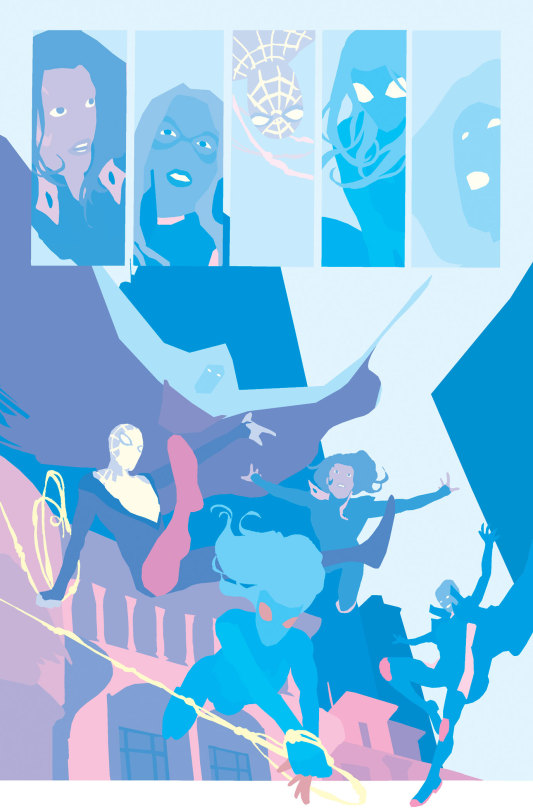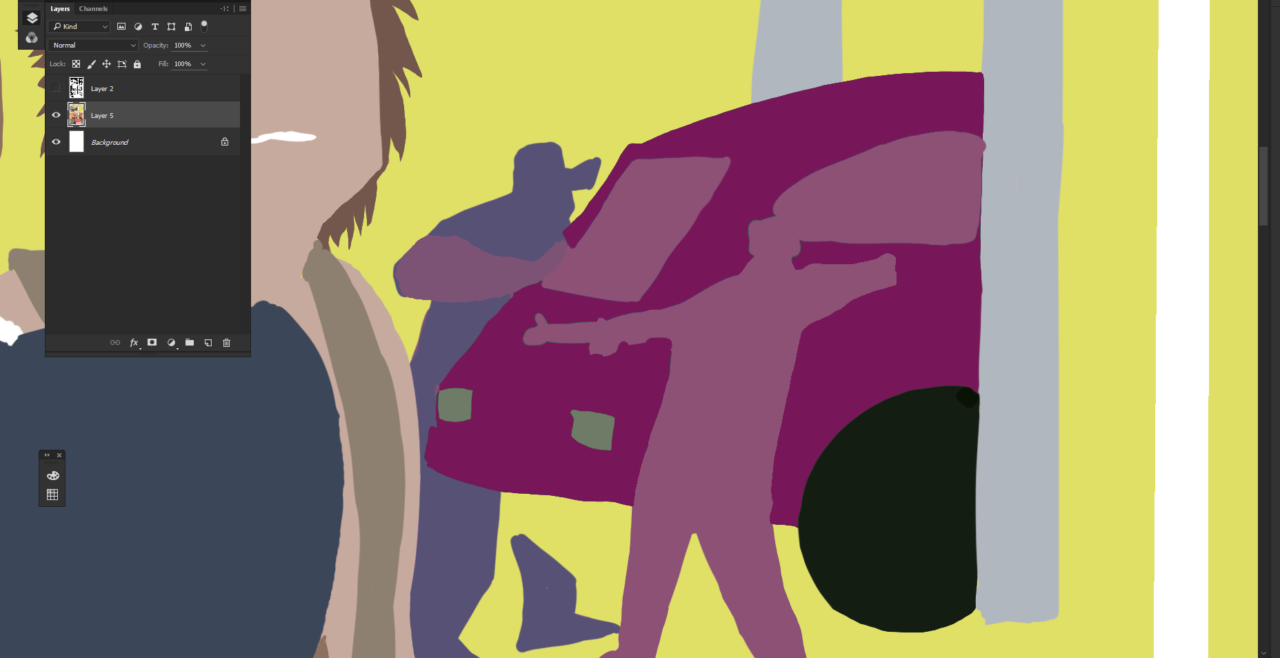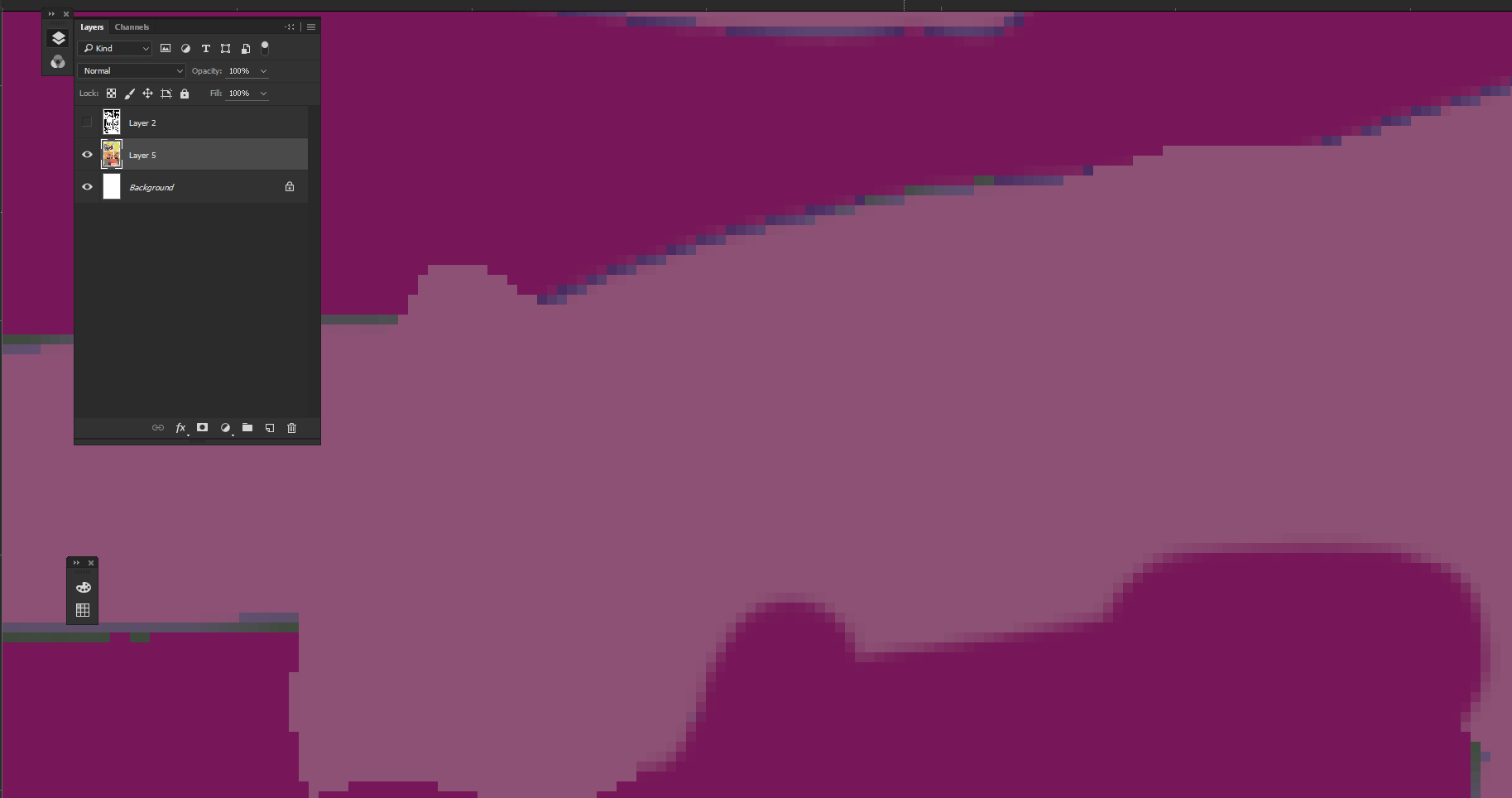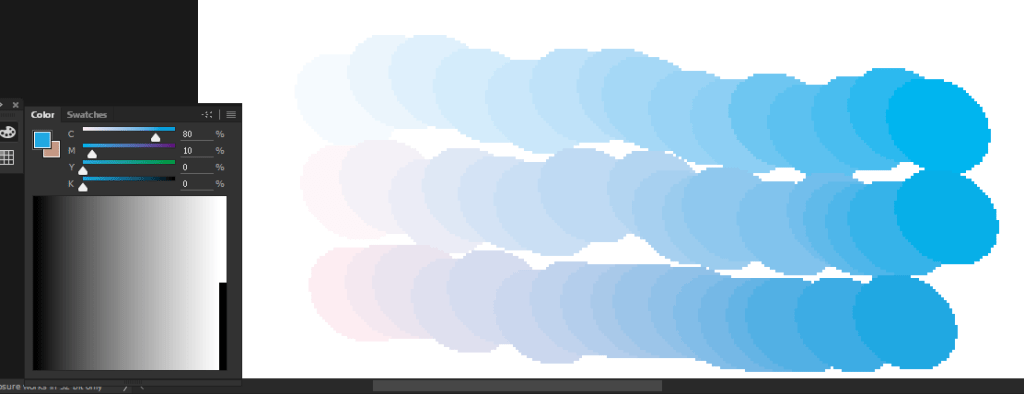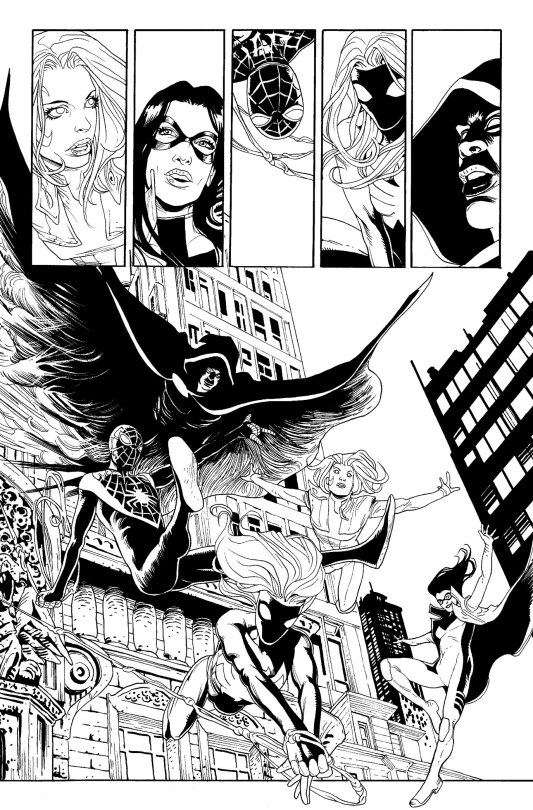
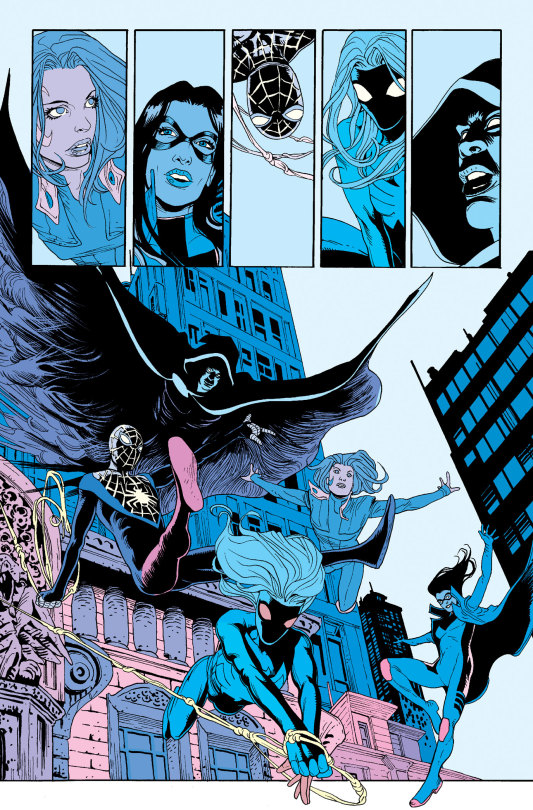
Hey there, have you been wondering just what the heck a flatter does? Well I am going to give you another long serious professional dissection of what a flatter does and why it is important. To further prove that I am a very boring person obsessed with minutia. [You’re very interesting actually — Ed.]
A flatter is a technician. First and foremost a flatter’s job is to create precise, accurate, abutting selections.
When comics are printed the colors are separated into four plates. CMYK. These plates will often shift a small amount, because they are attached to enormous machines running at a rapid pace. Imagine how you get jostled riding a horse– now imagine that horse is 3 tons & going 85 miles per hour! It’ll jostle your bones to dust. That’s why you don’t make printing plates out of bone.
To prevent blurring in the final product the color must meet accurately under the line art. The line art also has special treatment to account for plate shifting. (See trapping & backing in the vocabulary article)
As you can see below, the flatter creates precise selections. These selections meet exactly under the line. The selections ARE NOT THE COLORS THE COLORISTS WILL USE.

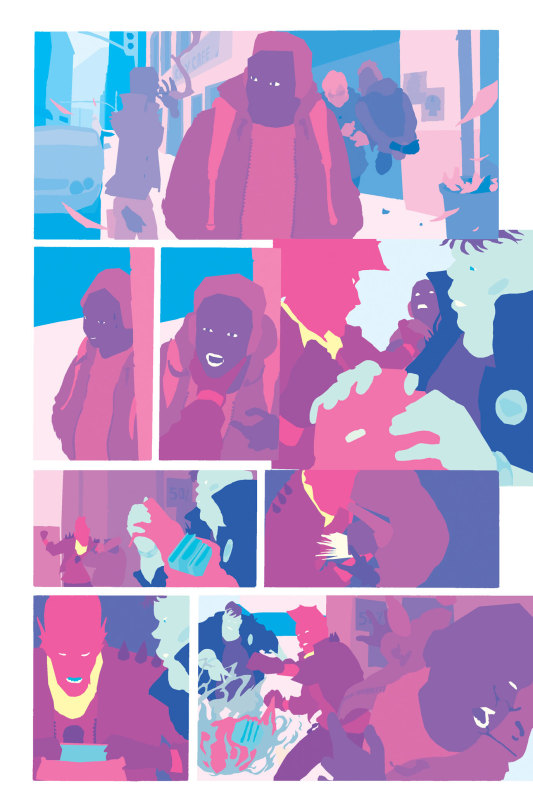
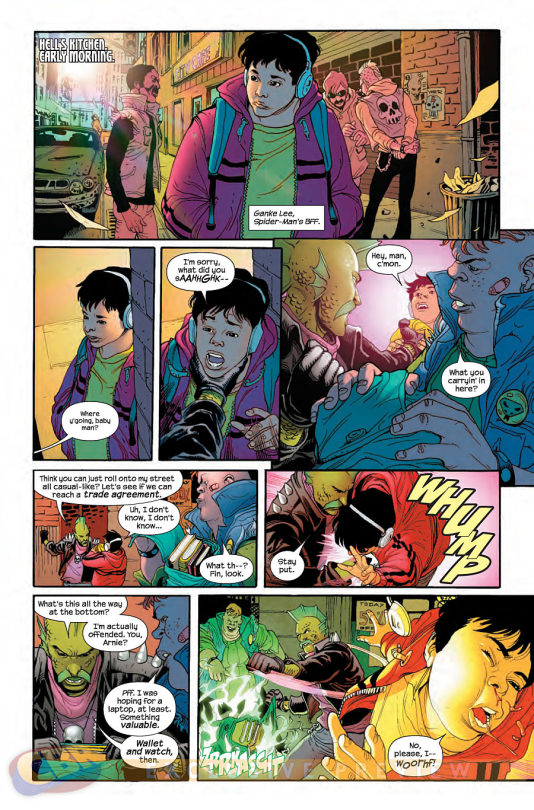
The flatter DOES NOT:
Make decisions for the colorist
Prepare palettes
Cut planes or define sculptural forms
Define the lighting
The flatter DOES:
Create selections
Work very hard and deserves credit
Flatters are unsung and indispensable. In my opinion they are often underpaid for the their technical expertise and hard labor. But a flatter is like a machinist; they are not responsible for the overall product. They are valuable technicians who work off the designs of the rest of the team.
WHAT ARE BAD FLATS
Flats need to be precise and on time. It’s a lot to ask for on a low budget, and almost every colorist will understand. But they will still have to ghost if bad flats are turned in.
This doesn’t mean you, prospective flatter, have to be perfect at all times. You’re human! But here is what to avoid if you plan on flatting:
You can see from this image the figures are treated as one selection. The walls and floors are also one selection. One figure is the same selection as the car window.
Zooming in closer you can see there is anti aliasing, the blurred effect that edges the shades of pink, which creates many small selections. You can see the effects of the anti aliasing along the upper edge where there is the remainder of a previous color.
Technical talk: My personal preference for flatting is to create new selections then increase C 5% if you are working in CMYK. Once C is at 80% it is difficult to see the different selections. Go back to C 0% and increase M 5%, the work through C again. When M is maxed out work through Y. If you lose your place add 5% K. This gives you something like 16^16 selections you can work with and ensures you do not repeat selections!
BECOMING A FLATTER
If you are considering becoming a flatter, great! There is tons of work available and a colorist loves a reliable flatter more than anything. You’re the wind under their wings. You’re the sunshine on their dandelions. You’re our soft flowing water from which all life springs.
Before you start looking for work, practice flatting. Of course! A page should take between 30-90 minutes. This is really important because page rates for a flatter are 10-15 USD/pp. You can try to negotiate for more, but keep in mind that the colorist still needs to do 1-3 hours of work on the page, business management & taxes. If you build a reliable relationship with a colorist, many will be very happy to pay you more.
Once you are efficient at flatting and you do not have stray pixels you can post your portfolio on the gutterzombie flatting yellow pages, deviant art, twitter and digital webbing. Colorists often put out calls on twitter for a flatter. (But don’t get upset if they can’t respond to you. Colorists work between 10-18 hours a day on average, which means they can’t always answer every inquiry.)
Here are some questions to ask a colorist when you first start working with them:
- Do you prefer CMYK or RGB
- Do you prefer conventional flats or rainbow flats?
- Do you want line art in channels or layers? Do you have a specific name for the line art?
- Do you prefer all eyes and teeth the same selection? Or eye/teeth per person? Or eyes/teeth separate on people and groups?
- Do you need planar changes separated?
- Do you need bolts & buttons separated?
- Do you have a character costume sheet I can work off of?
- If I’m running behind by an hour do you need to be notified?
- How often do you forsee needing last minute flats?
- Would you prefer to pay weekly, every other week or once a month?
- Would you prefer to pay paypal or check?
- How many books do you need in a month?
Keep track of answers. Each colorist you work with may have different needs. And of course, here is my handy dandy accounting spreadsheet I developed while I was a flatter managing multiple books for multiple colorists.
Try to be organized, flexible and patient. I promise you’ll be a wonderful flatter if you do!
Speaking of wonderful flatters remember Flatter Appreciation Day is 6PM January 23rd — or as former flatter Chris Sebela puts it:
@marissadraws 6 Hours before Colorist Appreciation Day.
— Christopher Sebela (@xtop) March 10, 2016
Here are further resources:
Flatting tutorials
https://www.youtube.com/watch?v=KrlBZ_pJWF8
https://www.youtube.com/watch?v=eI7tLfwCyK8


